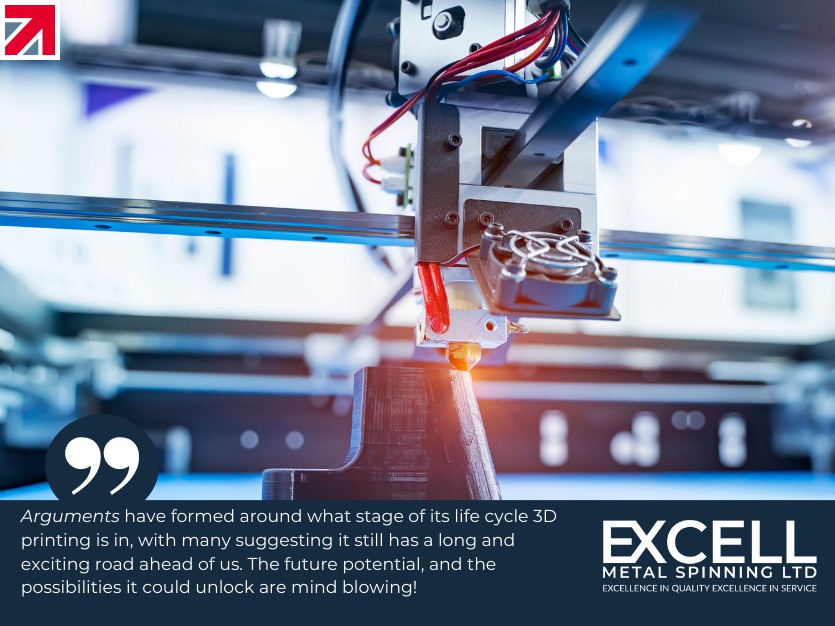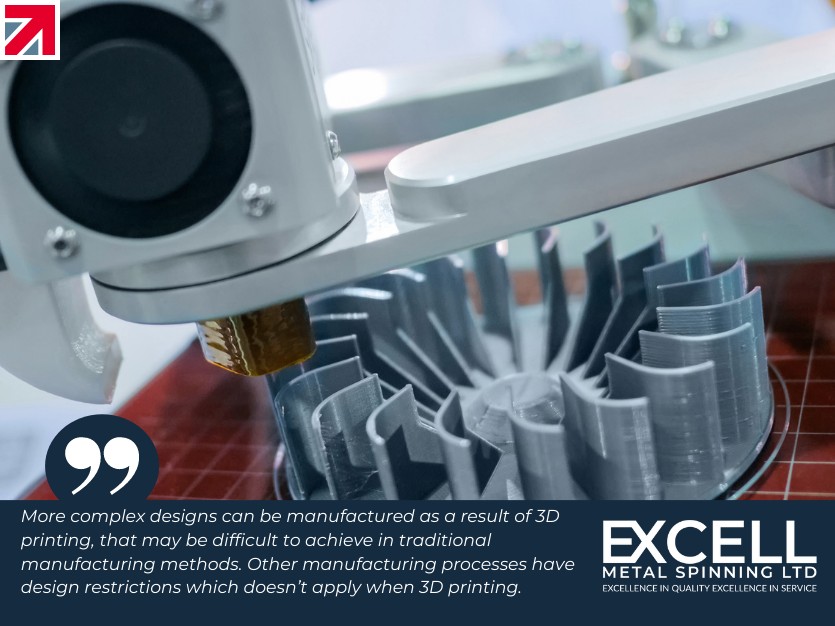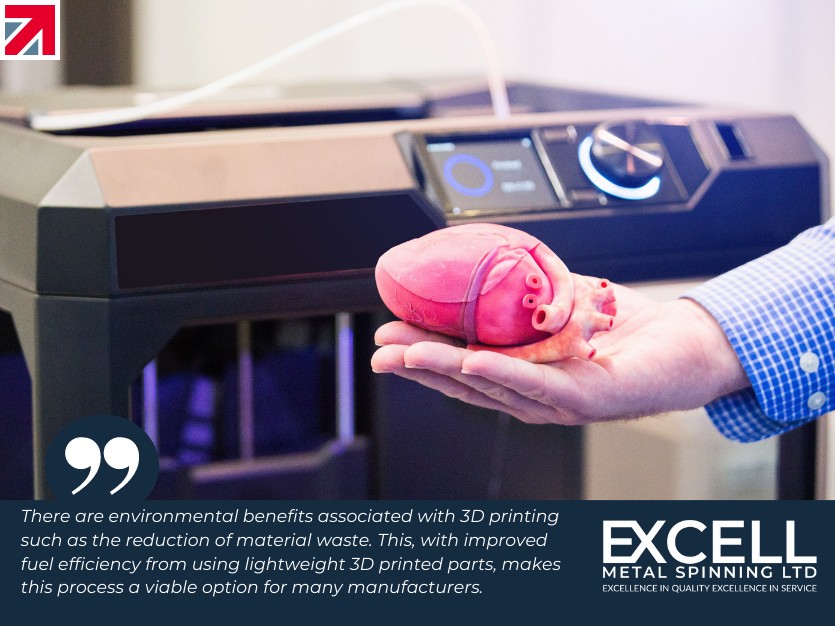Throughout this series, we have explored Five of The Six Types of Manufacturing Processes which have been adopted by organizations across the world. There has been much debate regarding 3D printing as a sixth manufacturing process, but the impact of technology has brought about an extraordinary evolution within industries.
According to 3D insider, 3D printing became a popular manufacturing process in the late 1980’s. This is because it proved to be a quick and accurate technique that was also cost effective. It’s offering of rapid prototyping of industrial products and designs attracted many industry leaders, and many businesses have adopted 3D printing in their manufacturing facilities today.
Arguments have formed around what stage of its life cycle 3D printing is in, with many suggesting it still has a long and exciting road ahead of us. The future potential, and the possibilities it could unlock are mind boggling. From 3D printing food to human body parts!
But what IS 3D Printing? And what are the advantages (and disadvantages) of it? We provide the answers below!
What is 3D Printing?
Within the last few years, 3D printing technology, often referred to as additive manufacturing, has begun to revolutionize the industry and how it manufactures products and components. These can range from toys to human body parts.
But how does it work? The best way to understand the 3D printing process is to think about how a normal printer works. It first begins as a computerized file like a word processor file, spreadsheet or a JPEG to name a few examples. The file is then uploaded to the printer via a computer or similar device and is finally printed at the tap of the print button. The printer itself extrudes ink onto the paper and produces a two-dimensional representation of the digital file.
3D printing works in a similar way but uses different materials and extra print-cycles. It requires a digital file to be uploaded to the printer which are referred to as CAD files, 3D computer graphics and more. When printing, the 3D printer uses filaments (a special type of ink) which can range from glass, plastic, metal or wood substances. The objects that are printed, are produced from multiple layers and this is where 3D printing gets the name ‘additive manufacturing’.
Is 3D printing limited to just Scientists and Engineers?
The short answer is no! 3D printing has seen a huge rise in popularity amongst hobbyists as a result of smaller, easier to operate machinery at considerably much less cost. For the price of a regular smartphone, you can purchase a budget end 3D printer from stores like Amazon. It has even been predicted that we could one day be printing our own products at home.
What are the Advantages of 3D Printing?
As a manufacturing process, there are many advantages organizations can benefit from in comparison to traditional manufacturing methods. These include;
Flexible Design
More complex designs can be manufactured as a result of 3D printing, that may be difficult to achieve in traditional manufacturing methods. Other manufacturing processes have design restrictions which doesn’t apply when 3D printing.
Rapid Prototyping
As result of parts manufactured within a matter of hours, 3D printing enhances the speed of prototyping processes. 3D printing unlocks the potential to complete stages faster and design modifications can be completed at a much more efficient rate.
On Demand Printing
With the reduction of space needed to stock inventory, 3D printing saves manufacturers storage space and costs. Files are easily stored and accessed for 3D designs and edits can be made at very low costs.
Strong and Lightweight
The most popular material to use when 3D printing is plastic. It offers many advantages given its lightweight properties and is especially popular within the automotive and aerospace industries. As well as printing some metal, parts can be printed from tailored materials for additional properties including heat resistance, strength and water repellency.
Design and Production Speed
3D printing can produce parts within hours, with times varying in relation to the design and complexity of the part. The design process is also fast with the creation of CAD files ready to be printed.
Waste Minimization
There is little to no wastage when printing parts in comparison to alternative methods of manufacturing. Only the materials needed for the part itself are required and therefore reduce the cost for the manufacturer.
Cost Effective
Yes, you guessed it! Cost efficiency is a benefit of 3D printing and requires little setup time as opposed to alternative processes that require multiple machines. Although, high end 3D printers can be expensive, businesses can opt to outsource their projects to 3D printing service companies instead.
Ease of Access
3D printers are becoming more readily available for businesses and consumers alike, and there are more local service providers than ever to outsource services for manufacturing work. This saves additional time and cost in terms of expensive transport from abroad.
Environmentally Friendly
There are environmental benefits associated with 3D printing such as the reduction of material waste. This, with improved fuel efficiency from using lightweight 3D printed parts, makes this process a viable option for many manufacturers.
What are the disadvantages of 3D printing?
There are many drawbacks as much as there are advantages when adopting or using 3D printing. Let’s explore some of them below
Limitations in Materials
Unfortunately, 3D printing isn’t quite there in terms of the selection of plastics and metal that can be used. Many of these materials can not be temperature controlled enough to allow for 3D printing, and many printable materials cannot be recycled nor food safe.
Build Size restrictions
Due to the small print chambers, parts are restricted to certain sizes and therefore large parts require multiple printed components that are joined together after production. This will inevitably inflate costs and time.
Large Volumes
3D printing is a static cost in comparison to more conventional techniques where large volumes may be more cost effective to produce. Unfortunately, the cost per unit does not reduce with 3D printing.
Part Structure
The layering of materials within 3D printing processes can delaminate under certain stresses or orientations.
A Reduction In Manufacturing Jobs
There is also a potential reduction in human labor costs as a result of automation and production with printers. Many third world countries who rely on low skill jobs are at risk of losing out as a result of cutting out the need for production abroad.
Design Inaccuracies
Some printers have lower tolerances which can impact the final product from its initial design. Post processing can fix this error, but will increase the time and cost of the production
Copyright Issues
There is a greater risk that counterfeit products enter the market as 3D printing becomes more popular and accessible. This has evident issues around copyright and quality control.
Are 3D printing processes something your business has adopted? What are your thoughts on this manufacturing process? Don’t forget to share this page on social media and tell us your thoughts on the topic!
Find out more about Excell Metal Spinning Ltd on their member profile page here
Member-created content 4 years ago | From members




